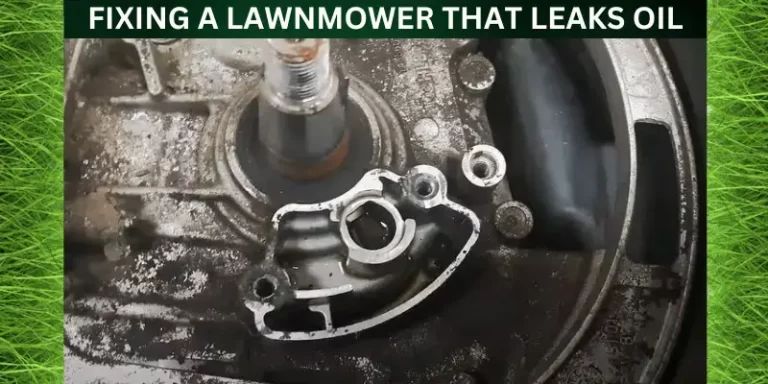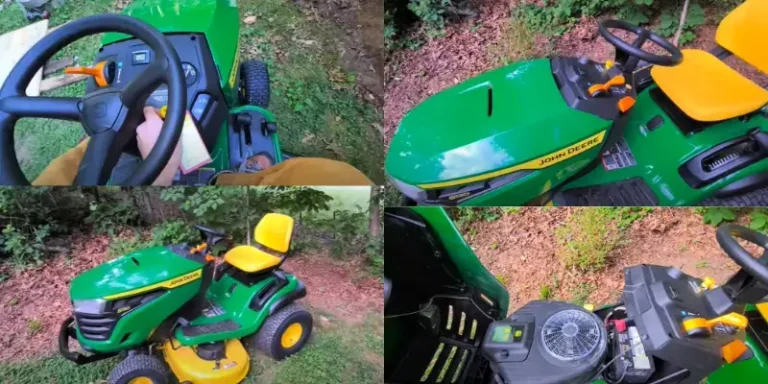Which Way To Tilt Lawn Mower: Correct Method with Easy Steps
Proper maintenance and handling of your lawnmower is important for the health of your lawn. It is also important for the durability and performance of your mower. Homeowners frequently tilt their lawnmowers incorrectly during necessary maintenance, even during cleaning or blade inspection. This habit is not only dangerous for the machine but also for your lawn’s appearance.
So, the question is: Which way to tilt the lawn mower? I aim to provide you with all the necessary information about the correct way to tilt your machine during routine maintenance or for any other purpose. By focusing on the correct way to tilt your lawnmower, you can avoid these pitfalls, ensuring your mower runs efficiently.
The Right Way to Tilt Your Lawnmower
Understanding the Basics
The essence of tilting your lawnmower correctly is preventing oil from seeping into the wrong parts of the mower, specifically the carburetor and the air filter. To achieve this, the lawnmower should always be tilted with the carburetor side up.
This orientation ensures that the oil remains in the lower part of the engine, preventing it from clogging the carburetor or saturating the air filter, which could lead to difficulties in starting the mower and potential engine damage.
Identifying Key Components
Before tilting your mower, it’s important to identify the carburetor’s location, which can typically be found on one side of the engine. You can get the information about the carburetor from the user manual.
Recognizing the carburetor is vital because it plays a vital role in the engine’s operation, mixing the air and fuel in the correct ratio for efficient combustion. Knowing where this essential component is located allows you to ensure it stays oil-free during and after the tilting process.
Step-by-Step Guide to Correctly Tilt Your Lawnmower
Step 1: Preparation
Read the Manual: Before you do anything, consult your lawnmower’s manual. It contains crucial information about the specific needs and warnings for your model.
Safety Gear: Wear gloves to protect your hands and goggles if you’re dealing with a particularly dirty mower.
Cool Down: Ensure the lawnmower engine is cool. Tilt a hot mower could cause burns or other injuries.
Fuel and Oil Check: Make sure the fuel tank is either empty or tightly closed to prevent spills. Similarly, check if the oil cap is secure.
Remove the Spark Plug: To prevent the lawnmower from accidentally starting, disconnect the spark plug.
Step 2: Identifying the Carburetor Side
Locate the Carburetor: Use your manual to find the carburetor. It’s usually on one side of the engine, often identifiable by the air filter.
Mark the Side: Once you’ve located the carburetor, make a mental note or physically mark the side it’s on. This is the side that should remain up when tilting.
Step 3: Tilt the Mower
Stable Ground: Ensure you’re on flat and stable ground to prevent the mower or yourself from slipping.
Tilt Direction: Carefully tilt the mower on its side, keeping the carburetor side facing upwards. This prevents oil from leaking into the carburetor or air filter.
Secure Position: Make sure the mower is stable in its tilted position. You may need to prop it up securely to keep it from falling over while you work.
Step 4: Maintenance Tasks
Blade Inspection: With the mower safely tilted, you can now inspect the blade. Look for any signs of wear, damage, or dullness.
Cleaning: Remove any grass clippings, dirt, and debris from the underside of the mower deck. A putty knife or similar tool can be very effective for this.
Blade Sharpening/Replacement: If the blade is dull or damaged, either sharpen it according to the manufacturer’s instructions or replace it with a new one.
Step 5: Returning the Mower to Its Upright Position
Carefully Lower the Mower: Once maintenance is complete, carefully and slowly lower the mower back to its upright position.
Check for Leaks: After the mower is upright, check for any signs of oil or fuel leaks. If you notice any, ensure that caps are tightened or that there’s no damage to the mower.
Step 6: Post-Tilt Checks
Reconnect the Spark Plug: Reconnect the spark plug now that you’re done with the maintenance tasks.
Final Inspection: Give the mower a once-over to ensure everything is in place and there are no loose parts.
Test Start: Perform a test start to ensure that the mower is running smoothly. It’s normal for the mower to smoke a little if some oil did get into the wrong place; it should clear up after running for a few minutes.
Troubleshooting and Prevention During Tilt Work in Your Lawn Mower
Symptoms of Incorrect Tilt
Incorrect tilting can manifest in several ways, including observable leaks of gas or oil and difficulty in starting the mower. These symptoms indicate that the oil or fuel has possibly infiltrated areas where it shouldn’t be, such as the carburetor or air filter, affecting the mower’s functionality and efficiency.
Avoiding Pitfalls
To prevent these issues, always tilt the mower with the carburetor side facing up. Familiarizing yourself with the mower’s design and manufacturer instructions can further aid in avoiding common mistakes. Regular checks and maintenance routines can also help catch and correct any mishandling before it leads to more significant problems.
Safety Measures
Safety should always be a priority when handling heavy machinery like lawnmowers. Before tilting the mower, make sure it is turned off, and the spark plug is disconnected to prevent accidental starts. Wearing protective gloves can protect your hands from sharp blades or hot surfaces, and ensuring a clear, stable area for work can prevent physical injury.
What If You’ve Already Tilted Incorrectly?
Damage Control
If you realize the mower has been tilted incorrectly, don’t panic. First, assess the situation to understand the extent of the potential damage. Check for oil or fuel leaks and address them immediately to prevent slips or further contamination of the mower’s components.
Quick Fixes
In cases where oil has entered the carburetor or air filter, cleaning these components might be necessary. The mower’s manual can often provide guidance on how to clean or replace affected parts. For minor issues, simple at-home fixes can mitigate the damage and restore mower functionality.
Seeking Professional Help
For more serious complications, such as persistent starting problems or significant oil leakage, consulting with a professional repair service is advisable. They can offer a comprehensive assessment and perform necessary repairs or part replacements, ensuring your mower is safely and effectively restored to working condition.
Conclusion
Tilting your lawnmower correctly is essential for its durability and performance because when you tilt it wrong, it might damage any useful components, and there is a chance that the whole oil is drained from your machine, which is itself a disaster. By adhering to these simple yet effective methods and following these steps, you are well aware of the right way to tilt your mower. Regular maintenance, awareness, and correct handling practices are the keys to a well-maintained mower and a beautifully kept lawn.

About Naveed A Hashmi
In my childhood, I used to see my parents while working in the land, for these reasons today I have been serving the same as our own tradition and culture. I thus love to stay in it, because I want to learn something advanced and new so that I may improve my farm’s contour and help others with my experience.







